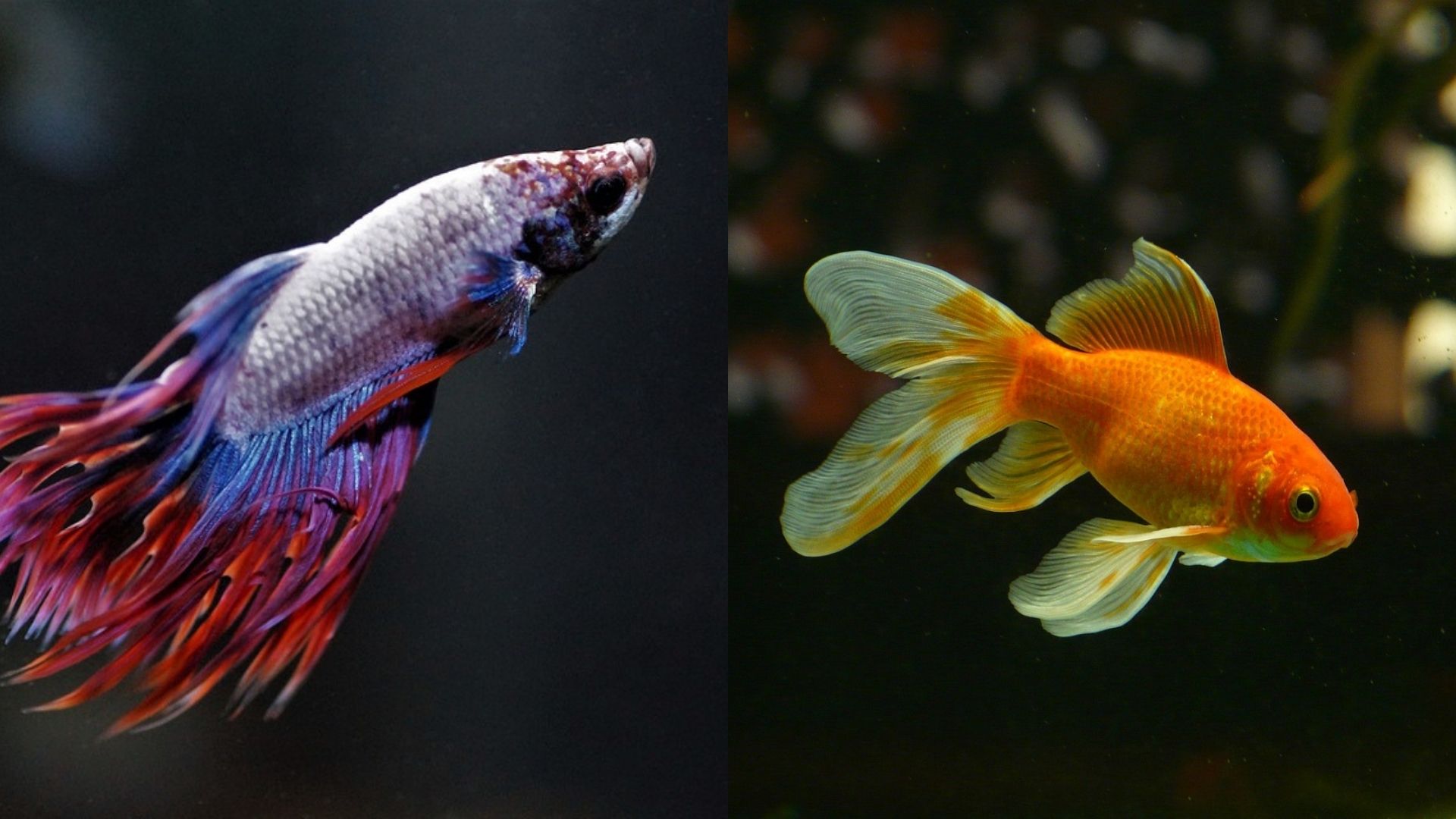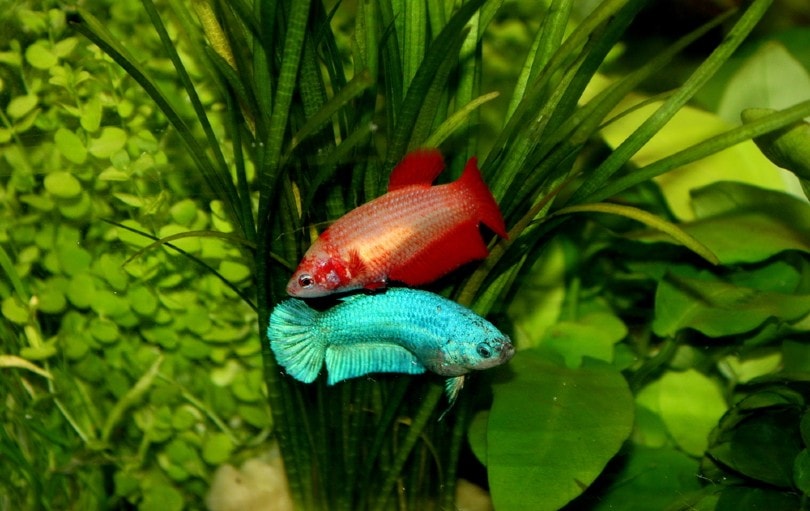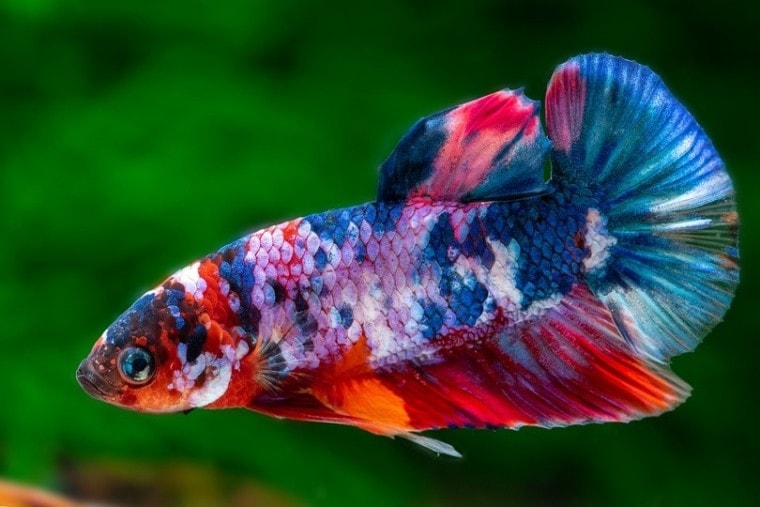
If you have seen the koi betta, otherwise called the marbled betta, you can see how they got their name. These bettas have the same erratically spotted patterns as Japanese koi fish.
If you have ever owned a betta fish before, you’re already up for the challenge. But, if you haven’t, we will discuss primary care and requirements to keep this fish happy and healthy throughout its lifetime.
Quick Facts about Koi Betta
| Species Name: | Betta splendens |
| Family: | Betta |
| Care Level: | Easy |
| Temperature: | 75 – 85 degrees F |
| Temperament: | Aggressive |
| Color Form: | Black, orange, white |
| Lifespan: | 3 years |
| Size: | 3 inches |
| Diet: | Carnivores |
| Minimum Tank Size: | 10 gallons |
| Compatibility: | Low |
Koi Betta Overview
The koi betta fish were initially known as marbled bettas, but as their intensity and color pattern transformed—so did their name. As a result, the koi betta resembles the infamous Japanese koi carp. However, the two aren’t directly related.
Koi bettas have the loveliest color patterns, ranging from white, orange, and blue hues. They have a calico-like appearance, waving their fins with elegance and grace. It is a stunning color that sets them apart from the rest.
Males and females look different, as most males are flashier and more flamboyant than the ladies. That is because they literally fight over the females in the wild, so they require extravagant displays.
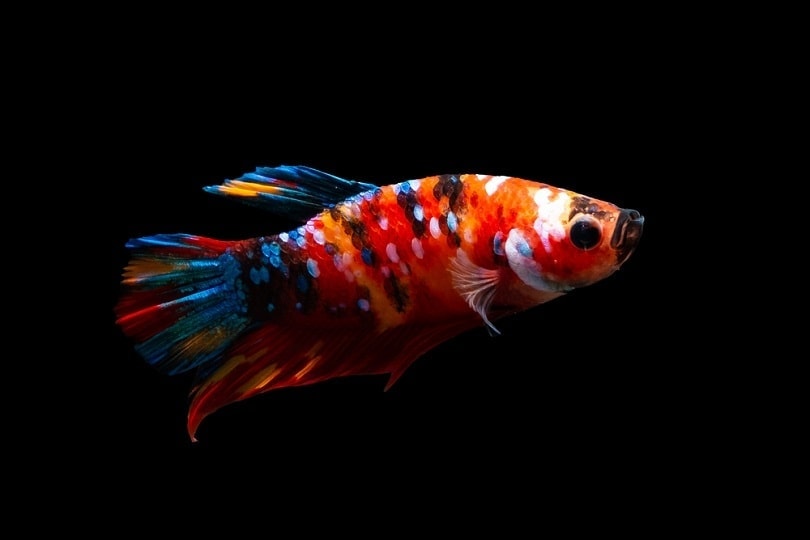
How Much Do Koi Betta Cost?
Koi betta fish are generally a little more than traditional types. You can expect to spend between $12 and $20.
You might also be able to find a koi betta fish in need of a new home. Sometimes, they can be free, while others may charge a small fee for the entire setup.
On top of your initial purchases, you also have to keep in mind all the supplies you’ll need for total care.
Typical Behavior & Temperament
Bettas have quite a reputation for being—well, spicy little buggers. They don’t get along well with like species and only make decent matches for a few tankmates.
Bettas are also called Siamese fighting fish because they aggressively chase off opposing males who want to interfere with their territory.
Sometimes, females can live in a small group peacefully, but this possibility is a gamble. Therefore, as a precautionary measure, bettas should only be together during mating.
As for entertainment, you can spend time watching your betta zip across the aquarium with zeal. These fish are inquisitive and active—and they might even follow your finger against the glass.
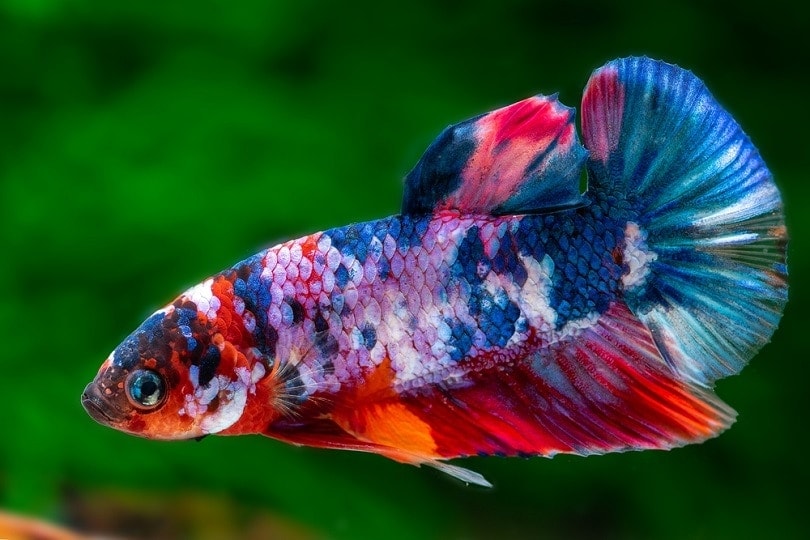
Appearance & Varieties
The koi betta started as the marbled beta—and it was slightly more diluted than the koi bettas you might see today. These fish have vividly colored flowing fins with hues of orange, red, yellow, white, and black.
Males tend to be a little more extravagant and eye-catching than their female counterparts. For example, female koi bettas have shorter fins and smaller bodies—but the color stays just as vibrant.
How to Take Care of Koi Betta
Providing the right aquarium and additives is essential for the livelihood and wellbeing of your betta. Here’s how to set things up.
Habitat, Tank Conditions & Setup
All bettas need compatible living mates that require the same water requirements.

What to Feed Your Koi Betta
Koi betta fish are predatory creatures that eat animal material. They will eat a standard diet of pellet food—but you can give them a variety of live foods to snack on, too.
Some betta fish can be particularly picky, so you will soon learn their favorites—and you can feed them accordingly.
Keeping Your Koi Betta Healthy
Your betta fish will live a very long time with proper care. However, there are specific issues to look out for when you own these fish.
You can keep in touch with local aquarists for advice on treating any illnesses that may pop up. Environmental factors are usually the culprit in disease, closely followed by diet.
To prevent health problems from rising, make sure your betta has a suitable environment and diet schedule.
Breeding
Breeding can be profitable, permitting that you do things correctly. However, since these fish can be quite testy toward one another, close supervision is essential. Once the deed is done, the male and female should separate once again.
When you introduce the pair, the male will start building a bubble nest within about an hour. If females love the nest, all is golden. If they don't, they might reject breeding or become disinterested in the male.
The mating process can take up to 6 hours. After that, each of them will partake in mating dance rituals and then finally finish the process.
Once the female releases the eggs, the male places them gently into the nest one by one. Interestingly, mom doesn't stay around after the egg release. Therefore, it would be best to move her into another enclosure, as the pair could fight to the death.
The male will tend to the eggs for about 3 days until they finally hatch. Once they do, dad's job is done, and you can move him out of the baby's tank, too.
Are Koi Betta Suitable For Your Aquarium?
Koi betta fish make charming additions to many tank setups. However, these fish work best alone—so if you have existing fish, make sure they are compatible or set up other arrangements.
Koi bettas are visually stunning, active fish that you will appreciate. These fish are perfect for first-timers and experienced hobbyists alike—enjoy!
Related Betta Reads:
- How to Tell If Your Betta Fish Is Happy (3 Signs to Look For)
- 10 Popular Types of Cory Catfish (With Pictures)
Featured Image Credit: Ron Kuenitz, Shutterstock





